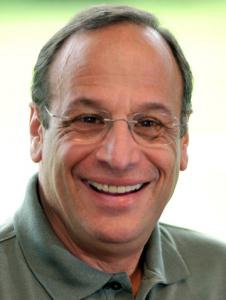What Happened at the OWS Town Hall Meeting?
Social Media Insiders Explain the Real Significance of Open Source Thinking and Self-Managed Groups
Headless Body Seeks Topless Rule
If it weren’t for the fight that broke out in the second hour of this Town Hall Meeting it would have been merely interesting. Social Media has gone from a dating, teen popularity management and marketing phenomenon to a revolutionary movement thanks to Occupy Wall Street, the Arab Spring, Spanish indignados and so on.
When a Wall Streeter at the meeting objected to being photographed after making an impassioned statement about how hard he worked and how much he deserved the American Dream, the clash of cultures became apparent.
Any netizen would accept being photographed in a public setting as simple transparency but his group saw it as a violation of privacy. Social Media, when applied to organizations that only know top-down management of the opaque kind is an existential threat. Keeping out of the news is a big deal. Showing your face is asking for trouble.
That generational divide is evident at many levels. Even the founder of Social Media and our lead speaker, Andrew Weinreich, who created the prototypical social media site, sixdgrees.com back in the 90’s, had doubts about the power of this movement because the numbers, he noted, are still small. Only a few thousand show up at Zucotti Park vs. millions in the Arab World, Spain or for that matter, Israel. Even the money it has raised, is a mere $500,000. Obama will raise $1 billion for his next campaign.
He would not be alone - industry types often underestimate its power because they saw this as a consumer business and not a battleground for the politically disenchanted who would be so inspired as to put themselves in harm’s way. Nevertheless, most of the public seems to get the potential. They are well aware that just one police strike generated 953 Occupy movements in 84 countries within days.
Headless Group Seeks a Topless Government.
The recurring complaint is that Occupy Wall Street has too many messages. Perhaps. Yet anytime they focus on one, it can be devastating. The numbers on the ground may small but the numbers at home or on their smartphones are immense. Americans may like to do their protesting from their couches but as long as a symbolic number are willing to take to the streets, the power of Social Media seems to hold.
What we are really witnessing is the battle testing of open source thinking vs. the old hierarchies. Like the civil war, where the bullets were more powerful than the military strategies of the day, there may be large and unexpected casualties. This may be more powerful than its creators imagined and harder for people in power to resolve than they know.
Thanks to our meeting, we have generated a few ideas - but they won’t be easy.
Legless and Headless
The courts may be the next testing ground. Yetta Kurland, is a legal activist and TV host who helps represent a Law society observer at an OWS protest who was run down by a police motorcycle. The police use these vehicles to control crowds and in the past, if an innocent person got in the way that was just too bad. They will arrest them, make up a story and bring them before the courts which would generally assume that the police are telling the truth. In this case there are widely distributed videos showing that the police mowed down this innocent observer, trapped him under the wheels of the vehicle and then beat and cuffed him as he writhed in pain. He now has to defend himself in court against some type of obstruction of justice charge. This charade continues even though the video is common knowledge thanks to YouTube and numerous cable TV news shows. One would imagine that the charges will be dropped but the issue will probably wind up costing the city dearly when it goes to Civil Court. The biggest cost to the NYPD, however, will be their credibility. Somewhere, heads will roll and a new management will have to rethink their practices in a world where everyone is watching.
Media Reorganization
Greg Galant, the founder of the Shorty Awards, arguably the “Oscars of the Twitterverse” talked about its impact on media. Journalists are now using Social Media tools like Storify, Klout and Hootsuite to keep tabs on the movement. Equally significant is the reshuffling of the media ecosystem – the blogosphere is generating stories that feeds the mainstream coverage while doing its own coverage of the traditional media’s reporting. Now that Google+ is adding journalists’ bios to the net, there is a channel for readers to communicate with them, thereby making the conversation interactive in all media. Besides, as Kurland pointed out, the mayors and police chiefs are using Social Media to discuss the issues among themselves too - Social Media’s influence has become inescapable.
What Color is Your Social Media Parachute?
John Havens, the author “Tactical Transparency” cites Facebook’s 900 million users and $21Bn in ad sales as the transformational issue in the business world. If CEOs haven’t already been alerted by those numbers, then the Occupy movement is surely their ultimate wake up call – and the Social Media industry’s single greatest advertisement. Companies need a crisis protocol for Social Media. More importantly, CMO’s must know that the brand doesn’t entirely belong to them although they bear ultimate responsibility for it. Jet Blue still seems to be the poster child for this type of approach, with CEO David Neeleman responding to customer issues with a heartfelt and slightly ruffled apology on YouTube. Admission of responsibility and promises to change seem to be the mantra. To keep the promise, JetBlue now has a team of people with the power to respond to Twitter complaints on the spot. The last storm showed that the problem could sill recur, yet so far the response has been relatively tepid.
Damn You – I’m Good
Stuart Tracte, who runs his own geek talk show “Beer Diplomacy” notes that Apple has no Social Media effort to speak of. Steve Jobs put out occasional text statements when he hurt his faithful and almost none of their products are actually made in the US. He just makes a “damned good product and you want it.” From Stuart’s perspective, OWS is not a Social Media movement as much as a human movement: people don’t want business in their government. They want to end that unless, of course, that business is as good as Apple’s.
Topple the Banks
Co-host, TJ Walker of Worldwide Media Training noted that the movement lacked the kind of single message that animated the anti-Vietnam War and Civil Rights movements. He announced his own eBook “Bust up the Big Banks” as an antidote to this, since the banks in his opinion, are the real issue. Then again, as he noted, thanks to Social Media he is now competing with 40 books on the topic of Occupy Wall Street.
Too Promotional to Fail
So where’s this all going? The city believes that winter will put OWS out of business but I doubt that. What better advertisement for a hip new camping company than supplying them with thermal tents and sleeping bags? Ski clothing is so good these days that freezing temperatures are just a fun fact. The movement only needs a few hundred people to keep their foothold – any number of interchangeable volunteers who can do this in shifts seem to be endlessly available thanks to the 10% unemployment figures.
Going Public About Being Public
Generally, the powerful will try to co-opt the groups they can’t crush. But OWS is a leaderless group. There are key influencers but they could be anywhere and if co-opted they could be replaced at any time by another influencer. Over time, it is quite possible that the group will dig in. If they raise enough money, they can buy the protest property they want or, in the ultimate irony of ironies – they could go public. They generate income, so why not sell stock? In theory, they could wind up acquiring the companies they oppose – the first publicly traded anti-Wall street company on a hostile takeover frenzy. When you consider that the NASDAQ OTC has not one but two technically illegal medical marijuana companies, MJNA and CANA, the idea is not so far-fetched.
Headless vs Bodyless: The End of Two Party Democracies
The real issue is this clash of civilizations: what happens when an amorphous, open source group organizes synchronously and multinationally against the World Order? Anyone who has grown up with Wikipedia knows that it works. Anyone who grew up with a set of Encyclopedia Britannicas still can’t accept that it’s for real. Democracies are really based a binary system – its either Democrats or Republicans, Labor or Management with a revocable dictatorship granted to the majority. Over time, the power concentrates near the top where it is open to manipulation by the highest bidder. That might have been fine when there were majorities but today we are more diverse and the ruling party is really the one with the best plurality of constituents of which most are not really served.
As Ross Perot and Jack Nader proved, we can’t handle a third or fourth or fifth party but in an open source environment, you can sustain a plurality of voices without affecting the core functioning of the system. Most governments, when not unduly influenced by special interests, can function quite well in a transparent, self-organizing, user-operated fashion. That would lower costs and doom a lot of bureaucratic guilds whose first priority are self-protection and poliferation.
On the other hand, leaders can try to learn from Apple: become a cool cult while providing incredibly good and inventive programs.
The public may stand to benefit either way.
Warning: to be a cult you must have somehow died and come back to life. On the other hand, if you are incredibly good and inventive in politics, your opponents will help you with the former.
Video Highlights to come










